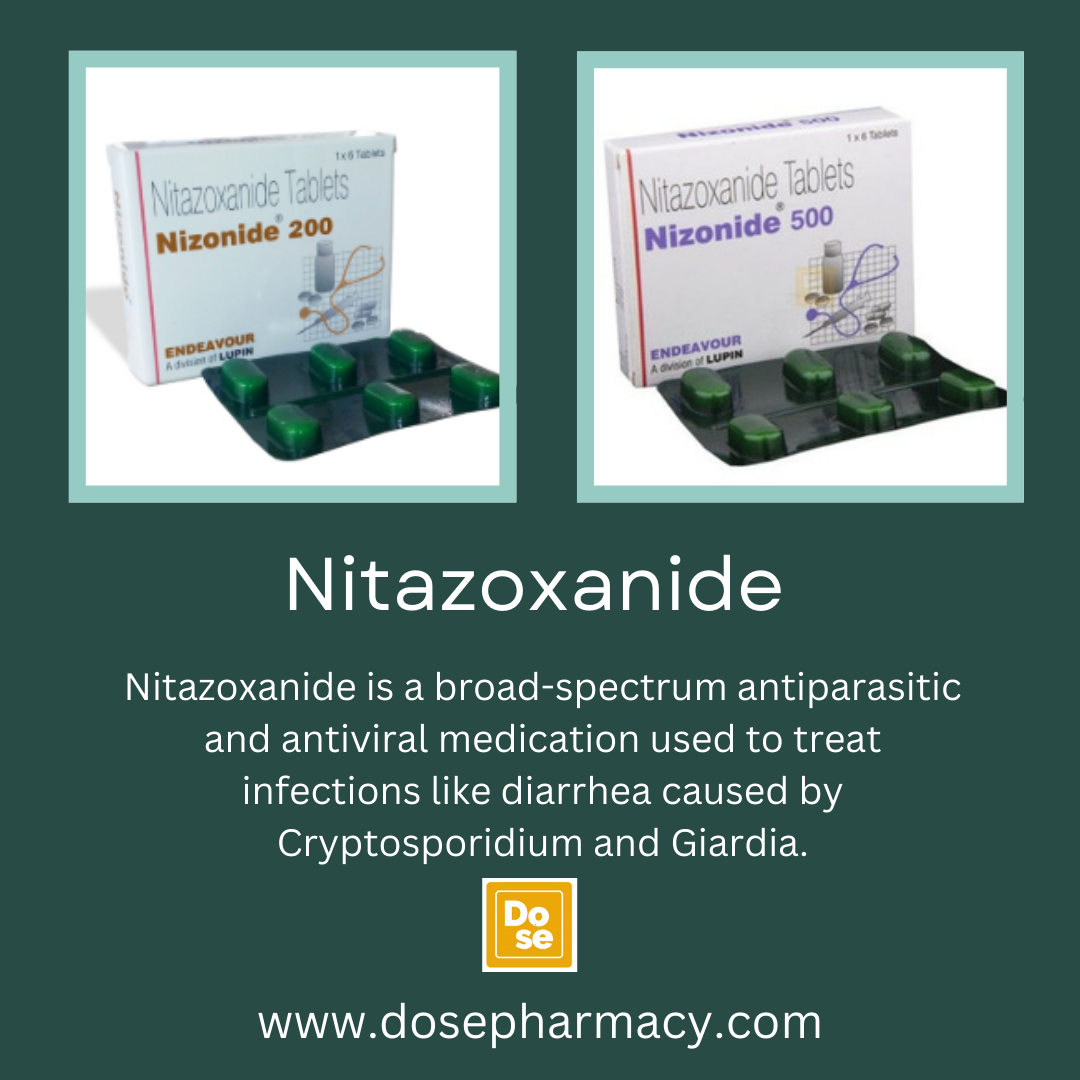Nitazoxanide 200 mg is a broad-spectrum antiprotozoal and antiviral medication used primarily for treating diarrheal illnesses caused by protozoa such as Cryptosporidium parvum and Giardia lamblia. It's also being studied for a wide range of viral infections due to its unique antiviral mechanism. If you've been prescribed Nitazoxanide or are considering its use, one of the most common and important questions is: How long does it take to work?
This article breaks down everything you need to know about Nitazoxanide's onset of action, factors influencing effectiveness, and expected recovery timelines for various infections.
What Is Nitazoxanide?
Nitazoxanide is an FDA-approved antiparasitic medication that has also demonstrated antiviral and anti-inflammatory properties. Originally developed to treat intestinal parasites, it has now gained attention for its off-label uses, including treatment of viral gastroenteritis, influenza, rotavirus, and even COVID-19 in certain research contexts.
It is commonly marketed under brand names such as:
-
Alinia (U.S.)
-
Nizonide (India and other countries)
Mechanism of Action
Nitazoxanide works by interfering with the energy metabolism of protozoa and anaerobic organisms. It inhibits the pyruvate:ferredoxin oxidoreductase (PFOR) enzyme, which is crucial for energy production in anaerobic organisms.
In viral infections, it modulates the host’s immune response and inhibits viral replication, although the precise antiviral mechanism is still being studied.
How Fast Does Nitazoxanide Work?
General Timeline:
Most people start to see symptom improvement within 24 to 72 hours after beginning Nitazoxanide. However, the speed of action depends on:
-
Type of infection
-
Severity of symptoms
-
Dosage and compliance
-
Age and immune status of the patient
Let’s break this down by condition:
1. Cryptosporidiosis and Giardiasis (Parasitic Diarrhea)
These are the most common FDA-approved uses of Nitazoxanide. In clinical studies:
-
Patients typically experience relief from diarrhea within 48 to 72 hours.
-
Complete symptom resolution may take 3 to 5 days with continued dosing.
Dosage Example:
-
Adults and children >12 years: 500 mg twice daily for 3 days
-
Children (1–11 years): Lower doses based on age and weight
In healthy individuals with normal immune function, treatment is highly effective and rapid.
2. Viral Gastroenteritis (e.g., Rotavirus, Norovirus)
Though not officially FDA-approved for this use, Nitazoxanide has shown promising results in clinical trials for rotavirus-induced diarrhea, especially in children.
-
Symptom relief generally occurs within 24 to 48 hours.
-
A shortened duration of diarrhea has been observed by 1–2 days compared to placebo.
This makes it a potential option in pediatric viral diarrhea, particularly in countries where rotavirus is prevalent.
3. Influenza and Respiratory Viral Infections
Nitazoxanide has demonstrated antiviral properties against influenza A and B viruses. While not a first-line flu treatment, it has been studied as an adjunct therapy.
-
Symptom improvement (fever, fatigue, congestion) may occur within 36 to 72 hours.
-
A shorter illness duration by around 1.2–1.8 days has been reported.
Important: Nitazoxanide is not a replacement for antiviral medications like oseltamivir (Tamiflu) but may support faster recovery in some cases.
4. COVID-19 (Investigational Use)
Nitazoxanide has been explored as a repurposed antiviral drug during the COVID-19 pandemic. In some studies, it showed:
-
Reduction in viral load within 3 to 5 days
-
Some improvement in mild to moderate symptoms when used early
However, it is not currently approved for the treatment of COVID-19 by major health authorities, and more data is needed.
Factors That Affect How Quickly It Works
1. Type and Severity of Infection
-
Mild infections usually resolve more quickly.
-
Severe or chronic infections may require longer treatment durations or follow-up doses.
2. Immune System Strength
-
Immunocompromised individuals (e.g., HIV/AIDS) may have delayed response times or require prolonged treatment.
3. Compliance
-
Missing doses or stopping treatment early can reduce effectiveness and delay recovery.
4. Food Intake
-
Nitazoxanide is best absorbed with food, which can improve blood concentration and speed of action.
5. Age
-
Children often respond faster to treatment for rotavirus and giardiasis, but dosing must be adjusted appropriately.
How Long Should You Take Nitazoxanide?
Treatment duration depends on the infection:
| Condition | Typical Duration |
|---|---|
| Giardiasis / Cryptosporidiosis | 3 days (adults and children) |
| Rotavirus (off-label) | 3 to 5 days |
| Influenza (off-label) | 5 days |
| COVID-19 (experimental) | Varies (not standard) |
Always follow your healthcare provider’s specific instructions.
When to See Results
| Time After First Dose | Expected Effect |
|---|---|
| Within 12–24 hours | Early symptom reduction (especially diarrhea) |
| 24–48 hours | Significant symptom improvement |
| 3–5 days | Full resolution in most cases |
If there is no improvement within 72 hours, consult your doctor. It could indicate:
-
Drug resistance
-
Incorrect diagnosis
-
Another underlying issue
What If Nitazoxanide Doesn’t Work?
Failure to respond may be due to:
-
Incorrect diagnosis (e.g., viral vs bacterial infection)
-
Co-existing infections requiring other medications
-
Resistance (especially in protozoa in certain regions)
-
Improper dosage or missed doses
In such cases, your doctor may recommend:
-
A longer treatment course
-
A different antiparasitic or antibiotic
-
Additional diagnostic testing
Safety and Side Effects
While effective, Nitazoxanide may cause side effects such as:
-
Nausea
-
Abdominal pain
-
Headache
-
Yellow discoloration of the sclera (temporary and harmless)
These side effects usually resolve on their own and are mild in most users.
Conclusion
Nitazoxanide typically starts working within 24 to 72 hours, depending on the infection being treated. It’s a fast-acting, effective solution for many gastrointestinal infections and holds promise in antiviral therapy. However, its success depends on early use, proper dosage, and correct diagnosis.
Always follow your healthcare provider’s instructions, complete the full course of medication, and monitor for both improvement and any adverse effects. With proper use, Nitazoxanide can offer rapid and reliable relief from some of the most common and uncomfortable infectious illnesses.
